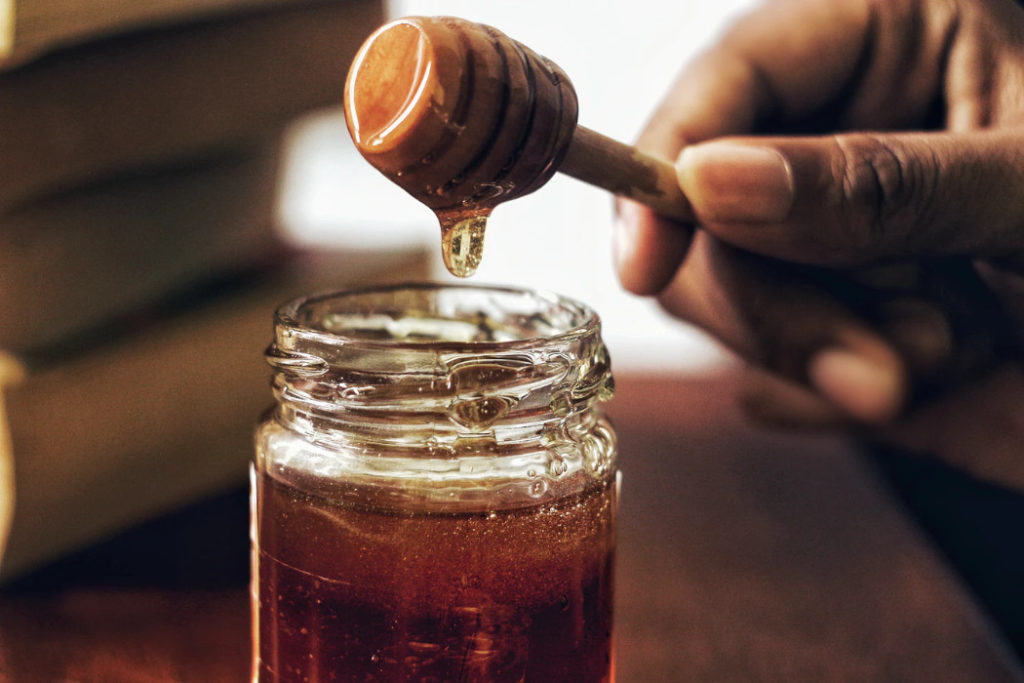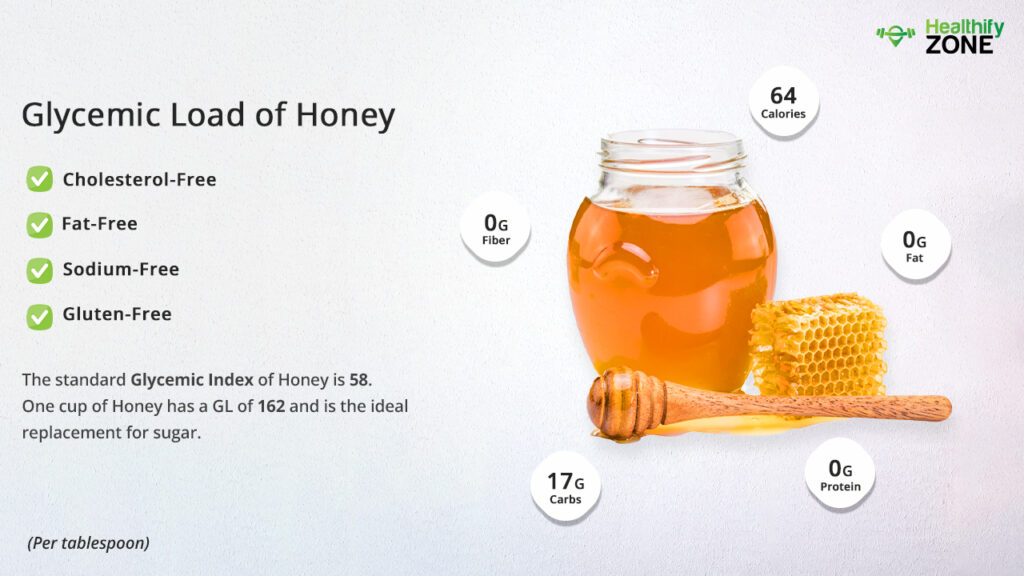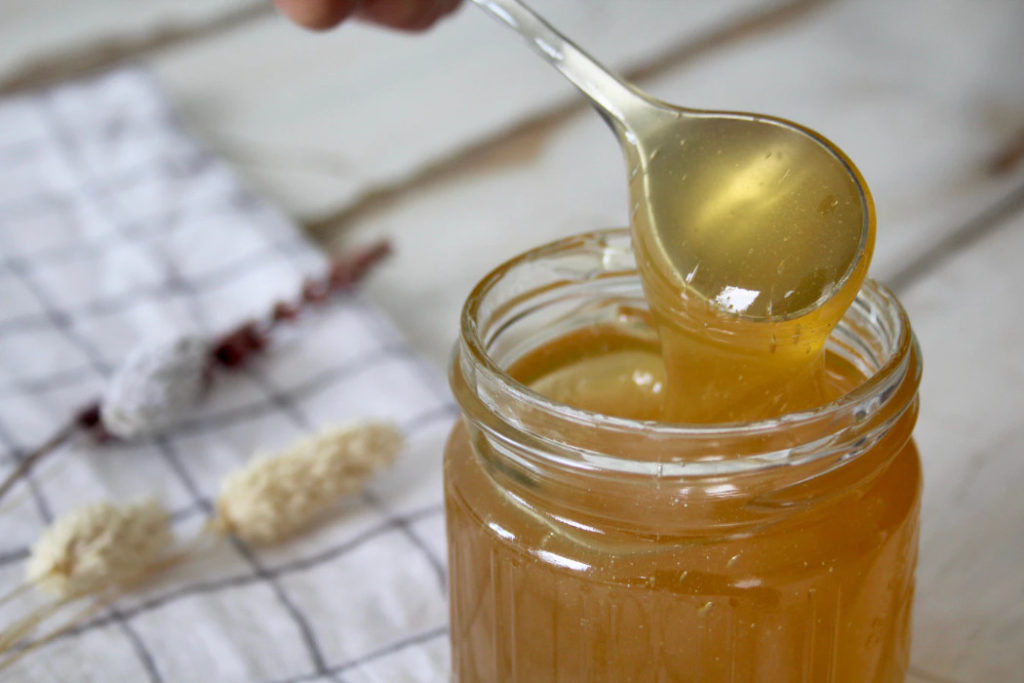Glycemic Load is the quantification of the carbohydrate content of food along with the pace at which it spikes your blood glucose levels. A convenient way of choosing healthier alternatives is looking at the Glycemic Index, which shows alternative sources of nutrients according to your blood glucose levels. Glucose would show a higher blood glucose response when compared to fructose.
Honey is known to have very beneficial health compounds, and since ancient times has been used as both food and medicine. It has a Glycemic Index of 58. It is very healthy, especially when used as an alternative to refined sugar. Honey is a sweet, thick liquid substance that honeybees make. They collect sugar- primarily nectar that is rich in sugar from the environment. Honey is the end product.

Honey has a variety of health benefits because it is packed with healthy nutrients like:
- Sodium
- Fiber
- Sugar
- Protein
How to Calculate Glycemic Load of Honey?
The standard Glycemic index of honey is 58, which is less than refined sugar. The high glycemic index of the fruit helps in reducing the risks related to cardiovascular diseases. If we want to talk about diet, the key to prevent diabetes or any chronic illness is to distribute the carbohydrate consumption content throughout the day and manage the sugar levels in the body correctly. A salad bowl containing a tablespoon of honey can be a good pre-workout meal. Avoid taking honey at late hours of the night.

The Formula/Procedure For Calculation of Glycemic Load of Honey :
GL = GI * carbs / 100
where
- GL – glycemic load;
- GI – glycemic index;
- and carbs – the amount of carbohydrates in the portion.
| SL.NO | Honey, BY WEIGHT IN (g) | GLYCEMIC LOAD |
| 1. | One tablespoon of Honey | 8.7 (low) |
| 2. | One pouch of Honey | 6.1 (medium) |
| 3. | 50 g of Honey | 21 (high) |
| 4. | 100 g of Honey | 42 (high) |
| 5. | 250 g of Honey | 105 (very high) |
| 6. | 1 Cup of Honey (150 g) | 162 (off the charts) |
Is Honey Safe to Consume If You Have Diabetes?
The studies and evidence found on honey result in mixed opinions. It is known to lower risk factors for heart disease, which are common in people who have type 2 diabetes. However, other studies have shown that honey leads to increased blood sugar levels, however, not as much as refined sugar would. So, essentially, honey is a healthier alternative for refined sugar but still must be consumed with extreme caution. Also, remember that a lot of items that we find in the market are adulterated, same with honey, so one must cautiously find organic items to assure it does not just contain sugar syrup/
Can I Eat Honey During a Fat-Loss Diet?
You can add honey to your diet during a strict fat-loss diet. If you are looking for good results, you should avoid having more than one tablespoon of honey.

- One tablespoon of honey has a GL of 8.7 which is in the permissible levels.
- Anything more than two tablespoons of honey is something which shoud be taken rarely if you are on a fat-loss diet.
- One tablespoon of honey used as a sweetener is premissible in a fat-loss diet.
Can I Eat Honey During a Low-Carbohydrate Diet?
You can consume some honey when you follow a low-carbohydrate diet. However, you must be careful about the portion size that you consume. We suggest you not consume more than one tablespoon per serving.
Is Honey High in Sugar?
One tablespoon of honey has 17g of carbohydrates present in it and the same amount of sugar present in it. It is important to understand that the sugar present in honey is natural sugar and does not cause as much harm as refined sugar. Thus, although high in sugar, honey can be consumed in controlled portions.